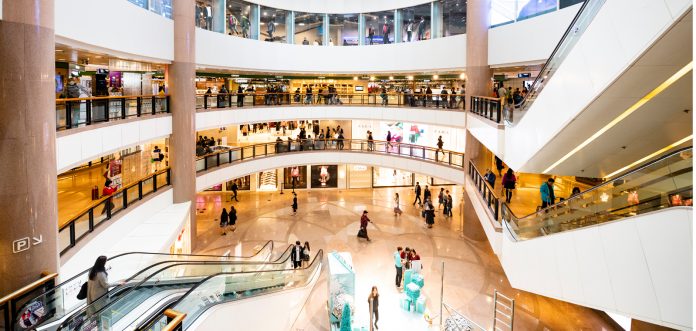The mall has been the biggest casualty of the lockdown triggered by the epidemic. After some painful conversations, mall chains like Phoenix Mills, Nexus, and DLF had expressed hope of normalcy in fares in FY22, but the second wave has been a wet one.
Some types of retail businesses flourished in the epidemic. With more Indians moving online with any amount of discounts or comprehensive classification of products, the directing consumer or D2C became a key mantra. Shopkeepers rediscovered the utility and flexibility of local shops, especially as the economic shock hit their pockets. As a result, according to consultancy firm Redseer, e-commerce grew by USD38 billion in GMV (gross merchandise value) last year and is set to grow to USD55 billion this year.
While the online medium has benefited from the practical change of buyers, the temple of the consumer economy of offline channels like Malls- New India was the worst affected.
Lockdown rules have been imposed since March last year and reimposed amid waves. They have generally been the harshest for malls as state governments argued that attached, air-conditioned spaces at the center were dangerous supporters of coronavirus.
Another Lost Year
It should not have happened. After some painful conversation, the mall saw a very low fare collection for FY21. Consider the financial health of Phoenix Mills Limited, one of the largest mall chains in the country. The uncertain future of the mall is reflected in the stock price of the firm – on a year-to-date basis, it has lowered benchmark indices.
For more than six months, retailers were locked up in their rented negotiations with mall owners and landlords of high street shopping areas. While the mall took longer to come to a decision, landlords were more flexible. This resulted in a sharp bounce back for high road shopping areas last year.
Reaching out for a recovery
For most retailers, traditional knowledge determines that rapid recovery in consumption comes from small towns. For the most part, the burden of high caseload and strict lockdown measures remains in metropolitan cities. “In small towns, vaccination rates are fast, in a final stage. The percentage of vaccinated people is 2x-3x higher than in cities like Mumbai. Therefore, the fear is that it is very little, and people are very much confident that there is a method to address symptoms if not treated [for Covid-19]. These factors have helped a lot in bringing people back to the mall, said Naik of Nexus.
However, for some mall operators, the highest amount of money is still among the largest cities in India. Consider Phoenix Mills. More than 60% of its total income for FY21 was built from its three malls in Mumbai and Bengaluru. Flagship High Street Phoenix and Palladium alone accounted for more than a quarter of their total income in Lower Parel, Mumbai.
Follow and connect with us on Facebook, LinkedIn & Twitter

